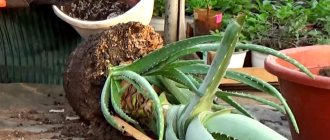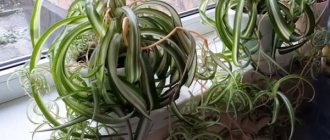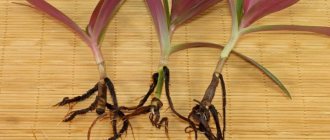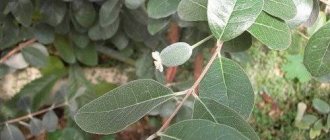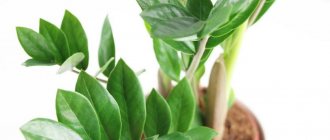Author: Elena N. https://floristics.info/ru/index.php?option=com_contact&view=contact&id=19 Category: Houseplants Published: February 02, 2019Last edits: January 11, 2021
- The myrtle has dried up
- Properties of myrtle
- Common myrtle (Myrtus communis)
plant (lat. Myrtus) belongs to the genus of evergreen woody plants of the Myrtaceae family, the flowers of which contain essential oil. The natural habitats of myrtle are the Mediterranean, the Azores and the north of the African continent. It is no coincidence that the name of the plant is consonant with the Greek word “myrrh”, which means “balm, liquid incense”, because it is as a cult attribute that myrtle essential oil has long been used in temples of various concessions. Legend says that Adam, expelled from Eden, brought the myrtle flower with him to Earth as a memory of the lost paradise. Many peoples have many myths, beliefs, traditions, rituals and signs associated with this plant. The myrtle tree has long been considered a symbol of glory, peace and hope. Our ancestors had myrtle flowers not only for cult purposes, but also for medical and cosmetic purposes, and some myrtle preparations are still popular today. But for plant lovers, a blooming and fragrant myrtle is an object of admiration and a source of aesthetic pleasure, especially since home myrtle is undemanding in care, and those who know how to care for myrtle can easily achieve the optimal shape for a plant that will decorate your home and help preserve To your health.
Planting and caring for myrtle
- Flowering: June-July.
- Lighting: bright sunlight until noon, then bright diffused light (southern, western and eastern windows).
- Temperature: in summer – normal for residential premises, in winter – 5-10 ˚C.
- Watering: in summer - frequent and plentiful; in cool seasons, watering is reduced.
- Humidity: high. Daily spraying of leaves is recommended, especially in hot weather.
- Feeding: from March to August once a week with complex mineral fertilizers.
- Dormant period: winter; in cool conditions - up to three months, in normal conditions - a month and a half.
- Replanting: young plants - annually, adults as needed.
- Pruning: after flowering or early spring.
- Reproduction: cuttings, less often seeds.
- Pests: scale insects, aphids, spider mites, whiteflies, mealybugs.
- Diseases: root rot.
Read more about growing myrtle below.
sunlight
The flower loves the sun, and may even be under its direct rays. However, it is better to hide it from excessively bright light during the midday heat.
The best option would be to place the plant near an east or west window. The lack of sunlight will affect the number of flowers - there will be fewer of them than expected.
Lack of sunlight can affect the number of flowers
Botanical description
Myrtle, which according to various sources has from forty to one hundred species, in its natural habitat can grow up to three meters in height, and indoor myrtle, under the most favorable conditions, reaches only a meter. Usually myrtle at home is a tree with a round crown 30-60 cm tall. Small leathery, as if polished, leaves of myrtle are located on the shoots sparsely and oppositely on short petioles, they have an elongated shape, the tops of the leaves are pointed. Flowers, simple or double, are either single or collected in a raceme. The fruit is a nut or drupe berry.
An interesting fact is that myrtaceae include such valuable plants for humanity as tea tree, eucalyptus, and clove tree.
Common varieties
Myrtle - care at home, how to reanimate if it has dried out
Myrtle is a houseplant that is famous for its variety of varieties.
Among them are some of the most popular:
- Boetica is a rare large-leaved variety. Its leaves grow up to 6–7 cm in length. Sometimes they curl and take on interesting shapes. Large fluffy white flowers bloom on the bush. Black, oval-shaped berries ripen from them. This variety grows very slowly.
- Flore Pleno - double snow-white flowers and bright green leaves of graceful shape.
- Variegata is a variegated plant: green leaves have yellowish spots. Sometimes there are leaves edged with a light border.
- Microphylla is a dwarf tree with small flowers and foliage.
- La Clape - growing quickly. Its flowers ripen into large purple fruits.
- La Clape Blanc is a variety with white fruits.
Compacta
- Tarentina is a small-leaved variety. Its dense crown consists of leaves 1–1.5 cm long. Many lush flowers bloom on the tree.
- Tarentina Granada - flowers turn into white berries.
- Tarentina Variegata is a variegated variety with white-green leaves.
- Microphylla Tarentina is a miniature variety.
- Alhambra - oblong leaves in a dense crown. White fruits ripen from the flowers.
- Leucocarpa - the name of the variety describes the color of its fruit: white berries.
- Compacta - glossy green leaves form a dense crown topped with double white flowers.
Alhambra
Growing myrtle from seeds
How to propagate myrtle by seeds at home? At the beginning of spring, myrtle seeds are sown on the surface of a substrate consisting of equal parts of sand and peat, in a container 7-10 cm deep, sprinkled on top with a layer of the same substrate 3-5 mm thick and, covered with glass, kept at a temperature of about 20 ºC, ventilating and moistening the crops, as well as removing condensation from the glass.
- Almonds: planting and care, types and varieties
Shoots appear in a week or two, and when the seedlings grow 2-3 true leaves, they are planted in the same substrate in individual pots so that the root collar remains above the soil surface. A month after picking, the seedlings are fed with nitrogen fertilizer of weak consistency.
However, amateur breeders should know that myrtle grown from seeds:
- will bloom no earlier than in 4-5 years;
- is unlikely to retain varietal characteristics.
In addition, the germination of myrtle seeds sharply decreases after just a year of storage, and obtaining them is problematic, since this will require artificial pollination of the plant.
Caring for myrtle at home
Growing conditions
Caring for myrtle at home includes watering, pruning and feeding the plant, as well as creating optimal or at least necessary conditions for it. The myrtle houseplant prefers southern, western and eastern window sills and is tolerant of drafts, temperature changes and direct sunlight. Moreover, if there is no sun, the myrtle will not bloom. In summer, myrtle prefers life in the fresh air; in winter, the plant needs coolness - 5-10 degrees Celsius, and the best place for it would be a glazed, unheated balcony.
In the warm season, myrtle should be watered Insufficient or infrequent watering can cause the plant to drop its leaves. With the onset of cold weather, watering is reduced, but if the plant spends the winter indoors with heating devices running, it will have to be watered just as abundantly as in the summer.
In addition, there will be a need to spray the leaves of the plant with water at least once a day, since myrtle needs high air humidity, and you need to remember this in winter, if the temperature in the room with myrtle is above 15 ºC, and in summer. Water for water procedures and irrigation must be settled or passed through a filter.
Once every week or two from March to August, myrtle needs fertilizing. If you are growing a bonsai from myrtle or you are not interested in its flowering, then feed the plant with a complex fertilizer for ornamental foliage plants, but if you want to see myrtle bloom, then apply fertilizer for flowering plants.
- How to grow an avocado from a seed
Myrtle has a pronounced dormant period, the duration of which determines the location of the plant: if myrtle overwinters in a cool place or on a northern windowsill, then it can rest for up to three months, and if it is warm and in bright light, then only for one and a half months.
Trimming
Caring for myrtle also involves giving its crown the desired shape. The formation of myrtle depends on what you are growing it for. Many people like myrtle in the form of a standard tree with a neat compact crown, but there are people who do not care what the plant looks like, as long as it “blooms and smells.” In any case, do not get too carried away with pruning the side shoots of young plants or pinching them excessively.
On the other hand, myrtle grows quickly, is easy to regenerate, and you always have the opportunity to change your plans for its appearance. The main thing is that the formation of the crown should be done in early spring or after flowering.
Transfer
Young plants are replanted annually, adult myrtles - as needed, which is determined in this way: if the freshly watered soil dries out within 24 hours, then it is time to increase the amount of substrate, and, therefore, a larger pot will be needed. Choose a pot that is only a couple of centimeters in diameter wider than the previous one. It is better to replant in the spring, using the method of transferring the plant from an old container to a new one, since it does not injure the root system.
How does myrtle bloom?
If all of the above conditions are met, you can expect that cute white or pink ball-buds will appear on the branches of an adult plant every year, which will subsequently bloom into five-petaled star-shaped inflorescences with numerous rays-stamens. In most varieties they are white or pink, and in shape and size they are very similar to cherry or apple flowers. There are also terry varieties that delight the eye with lush “chestnut” tassels.
flower-1291003_480.jpg
tree-nature-branch-blossom.jpg
The standard time for myrtle to bloom is from late spring to mid-summer. In a favorable climate, it can last for 2 months. During this period, the plant should be well illuminated by the sun and be in the fresh air. It is also useful to sometimes loosen the soil in the pot and under no circumstances allow it to dry out. A tight container helps speed up the budding process - this way the tree stops devoting all its energy to root growth and becomes more decorative.
5c3ecebbba56d5c3ecebba5bb.jpg
Myrtle propagation
If you want to propagate myrtle, then the best way to do this is cuttings, because it allows you to preserve the species and varietal characteristics of the plant. In addition, this is a much more reliable method of propagation than seed, and plants from cuttings bloom faster than those from seeds - in three years. Therefore, if you want to grow a myrtle tree at home, you don’t need to buy seeds that quickly lose their ability to germinate, just don’t be shy to ask your friends for a cutting after formative pruning. The best results are obtained from semi-lignified cuttings of the current year.
You can take cuttings from January to February, or in July, and it is better if they are from the lower or middle part of the crown. Remove the lower leaves from a piece of shoot 8-10 cm long, shorten the upper ones by a third, and the largest ones by half. Treat the lower cut with root or heteroauxin and plant for rooting in a mixture of leaf soil (one part) and coarse sand (half part), or sphagnum and sand in the same proportions. It is better to take a low and wide container for rooting, and it is advisable to cover the top of the cutting with a glass jar.
Rooting occurs at a temperature of 17-20 ºC in a shaded place. From time to time the jar is removed for ventilation and to prevent the soil from souring. Usually the roots grow within a month, and the rooted cuttings are transplanted into a pot with a diameter of 7 cm in the same soil mixture. After a year, transplant it into a container with a diameter of 9 cm in the soil for an adult myrtle and care for it as for an adult plant.
- Double pruning according to Sobolev
Pests and diseases
Myrtle is harmed by mealybugs, whiteflies, scale insects, aphids, thrips and spider mites, which appear as a result of chronic violation of the rules of plant maintenance. The first five pests are destroyed by treating myrtle with actara or actellik four times over the course of a month. It is advisable to wash off spider mites and thrips with a shower before treating with the same Actellik. But rather than poisoning myrtle with insecticides, it is better to prevent insect invasion by following very simple rules for caring for the plant.
The myrtle has dried up
A frequently asked question from our readers: “What to do if the myrtle has dried up?” should sound different: “What should I do to prevent myrtle from drying out?” And the answer to this question is very simple: strictly follow the rules for keeping myrtle. If the leaves of myrtle dry out, it means that you have not taken into account any of the recommendations of experts on caring for the plant. Insufficient air humidity has an adverse effect on the condition of the foliage, especially if in winter the myrtle is in a room with a temperature above 18 ºC, where heating devices operate, not only heating, but also drying out the air.
Myrtle also dries out if you forget to water it. Remember the rules for caring for a plant and follow them strictly, because it is much easier to prevent the death of a plant by taking preventive measures than to resuscitate it later. Water and spray the myrtle regularly with settled water, keep it on a tray with wet pebbles, but so that the bottom of the pot does not stand in water.
Transfer
Young trees need to be replanted once a year. Their root system grows wider, so they require a larger pot (3.5 cm wider).
Mature and old trees can live in one tub for 3–4 years. Transplantation is carried out in winter, when the plant is dormant. Drainage and fresh soil are prepared in a new wide container. After this, the myrtle must be removed from the previous pot and transplanted into a new one. After this, it is watered and fed.
Purple or white fruits
Properties of myrtle and signs
Properties of myrtle
The leaves, young shoots and fruits of myrtle contain essential oil and active substances that have a high antibacterial effect. Soviet scientists developed a medicinal drug - tincture of myrtle, which is prepared from the mature leaves of the plant. Both the experience of traditional medicine and modern scientific research confirm that the use of myrtle in the treatment of such serious diseases as diabetes, pneumonia and chronic bronchitis is highly effective.
Myrtle tincture successfully combats antibiotic-resistant strains of tuberculosis bacillus and staphylococcal infections, as well as purulent otitis media and severe smoker’s cough. In addition, the drug from myrtle leaves is a natural stimulator of important life processes that increase performance and endurance to stress; it has no side effects and is prescribed even to children from one year of age.
Doctors and botanists recommend keeping myrtle in bedrooms and children's rooms because it makes the air in them cleaner and healthier. One plant can purify the air of bacteria in a room of 20 square meters. meters.
Signs
Myrtle has long been considered a strong amulet. But the plant will fulfill this purpose only under two conditions:
- if it was planted by a woman - the mistress of the house;
- if the owners of the plant are proud of their myrtle.
Signs of European peoples say: if myrtle grows in a house, there will be peace and love in it, but if the plant dies and is thrown away, happiness will leave this house along with the dead plant. Myrtle is not suitable for offices - it needs a family hearth.
But Muslims do not keep myrtle in their homes, believing that it dooms young boys and girls living in the house to loneliness.
Chamelacium, wax myrtle or wax myrtle
Chamelaciums are very similar in flower structure to thin-seeded flowers, but they are slightly smaller, their petals are more fleshy, and they also have staminate filaments. The needle-shaped leaves make the shoots similar to conifers. On sale you can mainly find “hooked waxwort”, which is formed on a trunk. It got its name because of its linear leaves that are curved at the ends. This plant is also known as Geraldton's waxweed, as it is believed to have originated from there. The flowers, similar to wax, have white, pink, greenish shades.
One can distinguish a lushly flowering variety called “dancing queen”. The flowers look like roses and are lilac and pink in color. This popular plant goes on sale in the fall and winter.
Kinds
Common myrtle (Myrtus communis)
In home floriculture, the most commonly grown myrtle (Myrtus communis) has a short branched trunk covered with exfoliating scales of red-brown bark. The leaves are green, oval-lanceolate, glossy, leathery, with a pleasant aroma. The flowers are white or pale pink with prominent stamens, the fruits are red-black berries. Blooms from June to August. Popular cultivars: “Tarentina” - a compact bush with berries that are smaller than those of the original form, but there are significantly more of them than those of the common myrtle; The variegated variety has a creamy-white pattern on green leaves.
Lush myrtle (Myrtus apiculata)
Also interesting is the lush myrtle (Myrtus apiculata) - a bush or tree with peeling brown bark, under which the trunk is creamy white. The leaves are dark green, elliptical, matte. White single flowers bloom in July-August, black-red fruits are edible.
Myrtus chequen
Tree with shiny green leaves with wrinkled edges. This species is the most resilient of the myrtles.
Ralph's myrtle (Myrtus ralfii)
An erect bush with pinkish flowers and red edible berries. It is a variegated variety with a white-cream border around the edges of the leaves.
Specific features of the plant
Myrtle is classified as an evergreen plant. It is usually a low-growing tree or shrub. Caring for it requires some skill.
The decoration of the plant was oval shiny leaves and small white flowers. The fruits of the bush are small dark blue berries. The flowers and dense leaves of myrtle contain a large amount of essential oils. Dried leaves can be used in cooking.
The myrtle bush is well suited for a children's room, as it helps prevent colds and allergies, and the plant itself smells pleasant.
Myrtle has been cultivated for 400 years. The main differences between varieties appear in the color of the berries and the shape of the leaves. Homemade myrtle has poor frost resistance, which will not allow them to be grown in regions with cold climates.
One of the most frost-resistant species is the common myrtle - M.communis. This variety can reach up to 3 m in height. It is decorated with shiny dark green leaves. Flowering usually begins in June or July with small white flowers that will later develop into black fruits.
The smaller variety M.communis tarentina is characterized by white berries and narrow leaves. A fully formed bush can be obtained by the end of spring.
Varieties that are suitable for keeping in a room reach a height of 1 m. With a competent approach to caring for the plant, it will live for many years.


